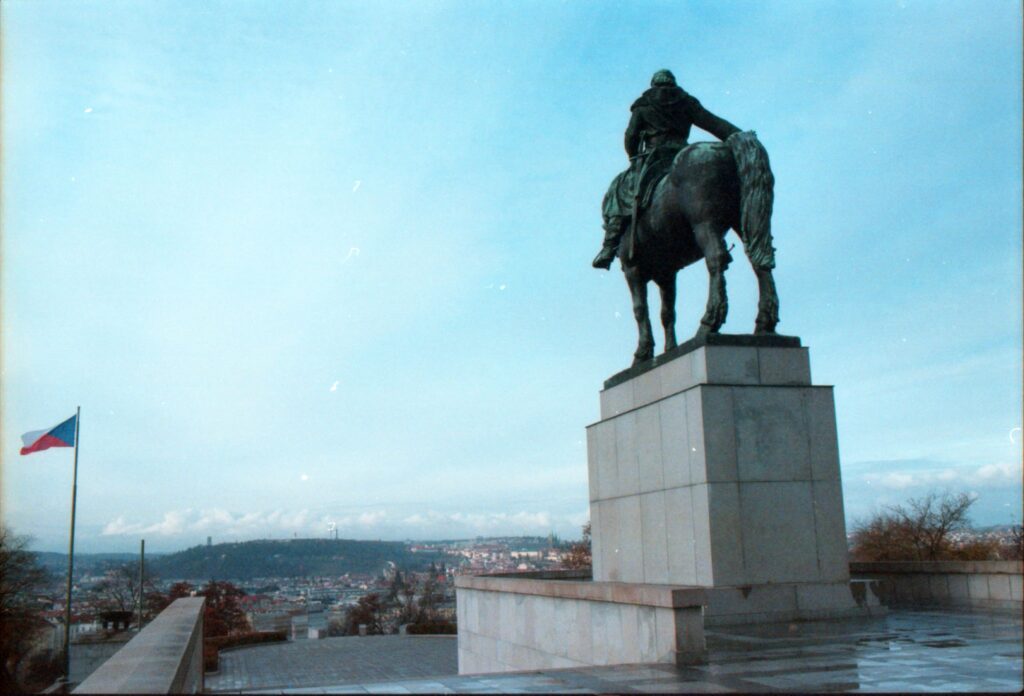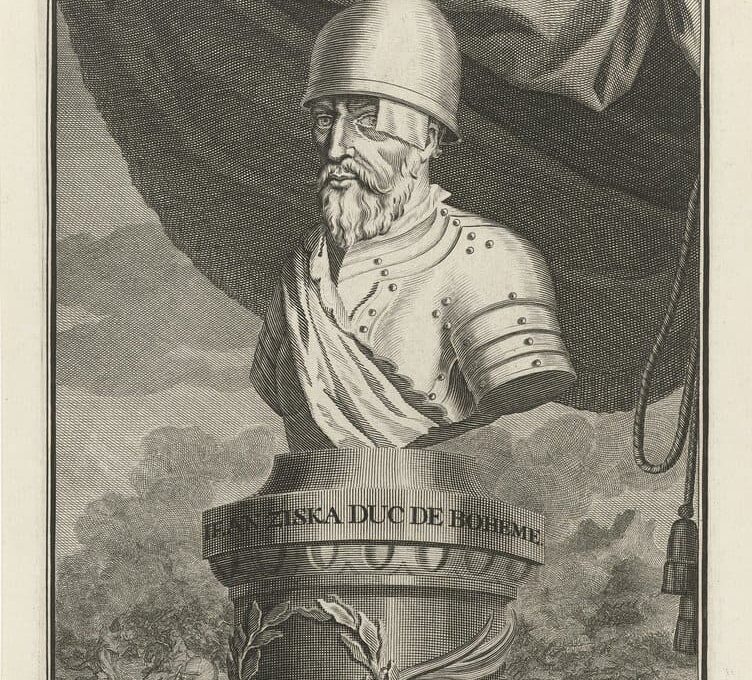Table of contents Show
You may be familiar with the name Jan Žižka if you’re a history buff, but who was Jan Zizka? Because of his role as a renowned military leader and an integral part of the Hussite revolt in 15th-century Czech territory, Jan Žižka will be remembered for centuries to come. His life, distinguished by unwavering loyalty to his cause and extraordinary combat skills, changed the trajectory of history. Who was Jan Zizka? is a question we’re going to answer in this piece.
The Czech people continue to celebrate and commemorate Jan Žižka today. Numerous cities and villages feature statues and memorials honoring him. The Jan Žižka Memorial in Prague’s Žižkov near the, New town hall in Prague features a Jan Zizka statue , making it the most recognizable Žižka memorial in the world. As a lasting tribute to Žižka, this monument is one of the biggest bronze equestrian figures in the world.
Jan Žižka’s life and legacy showcase the effectiveness of firm beliefs and innovative warfare during the Hussite Wars, altering Czech history. Jan Žižka: A True Story delves into his battles, tragic death, and the enduring statue, while The True Story of Jan Žižka and Catherine unveils the personal side, adding depth to the iconic Bohemian leader’s legend.
Who Is Jan Zizka: Exploring the Life of a Czech Icon

Who is Jan Žižka? As a result of his prominence in the Czech military throughout the 15th century, Jan Žižka is celebrated as a national hero. His life was defined by an unwavering commitment to the Hussite cause and by the development of innovative military techniques.
Jan Žižka was born around the year 1360 in the Kingdom of Bohemia (present-day Czech Republic) in the small village of Trocnov. We know very little about his upbringing, including his family and friends. He probably came from humble beginnings, but he would become a legendary warrior.
Jan Zizka True Story: The Untold Heroism
A great deal has been written regarding his military successes and leadership during the Hussite Wars, but his off-the-field heroics reveal an even more courageous and determined man. Here is Jan Zizka true story and his untold heroism:
Unorthodox Leadership
The heroism of Jan Žižka rests in his unusual leadership. Despite Jan Žižka losing an eye in battle and eventually becoming blind, Žižka persevered. He used his other senses and trusted superiors to give him orders. His fearlessness in leading his troops blindly violated convention.
Military Innovation
Žižka’s bravery included his outstanding military ideas. His innovative deployment of army wagons as mobile castles was impressive. This tactic changed conflicts and showed his fearlessness in adapting and innovating under fierce conflict.
Brave Will
Žižka showed bravery throughout the Hussite Wars. His bravery in guerrilla warfare against powerful foes and strategic brilliance beat the odds. Despite insurmountable odds, he showed remarkable courage and determination.
Cause Dedication
Jan Žižka’s unflinching loyalty to the Hussite cause exemplifies his unseen valor. He passionately defended religious and national liberties. Heroism is shown by his devotion to the Hussite cause and his readiness to sacrifice for it.
Jan Zizka Battles: Triumphs and Strategies Revealed
The Hussite army, led by Žižka, won several decisive battles in 1420 and 1421. The Jan Zizka battles were the Battle of Sudom, the Battle of Vyehrad, and the Battle of Kutná Hora. It was clear from these victories that Žižka possessed unrivaled military prowess. It became clear that Žižka was a military genius as he devised new methods that would alter the outcome of the conflicts.
Key Military Innovations
Žižka is well-known for developing several significant military improvements, including:
War Wagons: The employment of war wagons was arguably his most noticeable improvement in warfare. These rolling forts were armed to the teeth with cannons and musketeers. They shielded Hussite forces and made them more mobile, letting them engage in guerilla warfare and endure sieges.
Hussite Taborite Strategy: Žižka was a major player in the Taborite branch of the Hussite movement. His ability to lead the Taborites and implement innovative strategies was crucial to their victories.
How Did Jan Zizka Die: Unraveling the Mystery
On October 11, 1424, the life of Jan Žižka ended. The Hussite Wars, a religious and patriotic struggle that had enveloped Bohemia, were in full swing when he passed away.
There has been several hypotheses have been put forth as to what ultimately proved fatal for Žižka but how did jan zizka die? Some say he died of natural reasons, while others suspect he was poisoned. There is some ambiguity in the historical record, and the specifics are not totally clear.
Many people believe that Žižka died of natural reasons like an illness or blindness-related issues. This makes sense, thinking about how old he was and how challenging life was back then.
Jan Zizka Statue: A Tribute to a Legendary Figure
Who was Jan Žižka? We are confident you now have the answer because we have delved deep into it. It is critical to recognize his lasting impact on the Czech people and beyond. All around the country, you can visit a statue or monument honoring him as a constant reminder of his enduring influence. The Jan Žižka Memorial in Prague’s Žižkov neighborhood features an enormous equestrian statue of Žižka on a hill and is the most well-known of these monuments.Another popular one is the National Monument at Vítkov. The dedication of these statues to honor Žižka’s memory have become a source of national pride.
Even though the death of Jan Žižka signaled the end of an era, his legacy endured in the shape of novel military strategies, dogged persistence, and a lasting impression as a leader.





